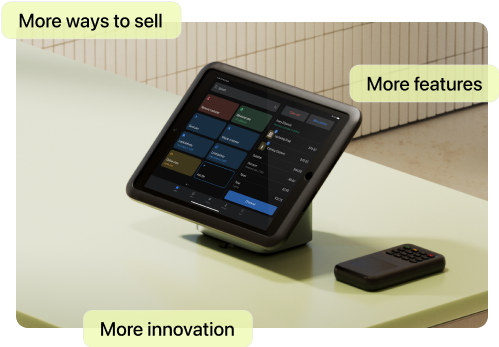Your domain name is like your site’s street address. But just like writing “Main Street” on an envelope won’t get it delivered to the correct address, your site needs an exact address too—it’s called a fully qualified domain name (FQDN).
Your FQDN is your website’s complete address, containing every detail web browsers need to find it. Understanding how FQDNs work is essential for anyone building a professional online presence, whether you’re launching an ecommerce store or establishing your brand’s digital home. Here’s what you need to know.
What is a fully qualified domain name?
A fully qualified domain name (FQDN)—also called an absolute domain name—is the complete domain name for a specific website, computer, or other internet-connected resource, like a server. Although you may never need to look up your own computer’s FQDN, you likely use FQDNs every day when you visit websites: An FQDN, like www.shopify.com, points to the exact location of a specific resource within the domain name system (DNS) hierarchy. The DNS acts like the internet’s contact list, translating each human-readable FQDN into its corresponding IP address—a machine-readable string of numbers that directs web browsers to the site’s location on a server.
FQDNs include four components: the top-level domain (TLD), second-level domain (SLD), subdomains, and hostname. They technically end with a trailing dot, although you’ll rarely see this in practice. Here’s a breakdown of each part:
-
Top-level domain. This is the ending of the FQDN, like .com, .edu, .org, or .gov, indicating the site’s type or purpose.
-
Second-level domain. This is usually the name of a business or organization, like “shopify” in www.shopify.com.
-
Subdomains. Some websites include subdomains that segment different services within a primary domain—for instance, blog.yourwebsite.com for your brand’s blog.
-
Hostname. The final part of the FQDN identifies the web server hosting the service. For a standard ecommerce store, this might be “www” (for World Wide Web). For a service like email, you might use “mail” or “email.”
Fully qualified domain names end with a period—the trailing dot. If you’ve never noticed a period at the end of a web address before, that’s because most user-facing software (like your internet browser) assumes the trailing dot. You don’t need to worry about this except in technical situations (like working directly with DNS configuration tools or writing low-level scripts), and you’ll notice that typing www.shopify.com. and www.shopify.com (no period) will bring you to the same place.
Fully vs. partially qualified domain name
A partially qualified domain name (PQDN), or relative domain name, is a shortened version of an FDQN. It leaves out some details the DNS needs to precisely locate a resource, but it can work for linking between pages on your own site or within a local area network (LAN). For example, names like login or store.example might work within a local network, where the system can fill in the gaps.
Outside this local context, a PQDN lacks the components needed to navigate the full DNS hierarchy—crucial for reaching and connecting to a remote server. That’s why PQDNs aren’t suitable for global use or for services that require an exact match, like SSL certificates or remote connections.
What’s the difference between a URL and an FQDN?
A URL is longer than an FQDN: It contains the FQDN plus instructions for how to access a site. For example, the URL https://www.yourdomain.com contains the FQDN www.yourdomain.com.
Think of it this way: The FQDN is the where (specific location on the internet), and the URL is the how (e.g., https:// tells the browser to access the site via an encrypted communication protocol).
A URL can also contain additional information about which path to take when a browser arrives at your site: The URL https://www.yourdomain.com/products, for example, tells the browser to go to your products page.
Why use a FQDN?
As a business owner, using FQDNs lets you set up a functioning website on the internet. A fully qualified domain name can:
-
Help set up secure websites.SSL certificates connect directly to FQDNs. If you don’t submit the FQDN to your certificate provider, you won’t get a certificate, which means you can’t support HTTPS connections, a key factor in security and trustworthiness.
-
Differentiate between services. Each FQDN you use names a specific service or server, so you can differentiate between an ecommerce site with store.yourdomain.com and a mail server at mail.yourdomain.com.
-
Enable remote access. Since the FQDN tells DNS where your computer or host is, you can access it from anywhere on the global internet.
-
Improve network security. FQDNs help define access points, which means you can set up firewall rules, manage DNS records, and enforce identity checks and logins. If anything’s off (between the SSL certificate, DNS, and FQDN) when a customer visits your site, they’ll get a warning, which helps them trust your site when everything works correctly.
-
Improve search engine optimization. Search engines need clearly structured, consistent domain names. A FQDN makes it easier for search engines to index your site and identify which parts serve which purpose.
How do you get an FDQN?
If you run a website on an ecommerce platform like Shopify, you probably already have an FQDN. If you’re building a site from scratch, using a domain registrar and hosting provider (a company that rents you space on a server) usually ensures you get one.
Here’s how to get an FDQN:
-
Buy a domain name like mydomain.com or mybusiness.net from a provider like Shopify, GoDaddy, or Porkbun. Many ecommerce platforms make accessing domain services easy and affordable.
-
Find a host for your website. Platforms like Shopify include hosting, but others may require you to purchase it separately through a web server hosting provider.
-
Choose your hostname, like www, shop, or mail (for a mail server). This defines the specific server visitors will reach when accessing your domain, and including it in your FDQN ensures their browser arrives at the correct web server.
How to find the FQDN for a PC or server
Although you most commonly interact with FQDNs when navigating the web, every individual computer and server has its own FQDN. Locating this address on your computer can be useful in work environments where a remote IT service needs to access your computer or you’re using remote desktop functionality.
If you want to find out the fully qualified domain name of your device, you can check using these steps on Mac, Windows, or Linux.
On Mac (macOS Sequoia 15.x), you can go to the Apple Menu and choose System Settings, then Sharing. Look for the local hostname at the bottom of the list. You can also launch Terminal, then type “hostname -f.”
This same command works on Linux. Type “hostname -f” into your Linux terminal for the FQDN.
On a Windows 10 machine, launch the Control Panel (type “control panel” in the Start Menu or type Win+R and type control.exe in the Run menu. Once you’re in the Control Panel, click on the System menu. You should then see the hostname and FQDN of your machine (under the “Computer name, domain, and workgroup settings” section.
Windows 11 does it a little differently. Navigate to the Settings app (the gear icon in the Start menu), then find the System option. Scroll down and click About and look in the Device Specifications section for your domain name. You can also use Command Prompt (search in the Settings app) and type “whoami /fqdn.”
What is a fully qualified domain name FAQ
What is an example of a fully qualified domain name?
The URL www.shopify.com is an example of a fully qualified domain name (FQDN). An FQDN must contain a hostname (“www”), second-level domain (“shopify”), and top-level domain (“.com”). It may also have a trailing dot, typically left off in practice.
What is the difference between FQDN and TLD?
A top-level domain (TLD) is one part of a fully qualified domain name (FQDN). The TLD appears at the end of the FQDN after a period—typically something like .com, .gov, .edu, or .org.
How do I set up a fully qualified domain name?
First, buy a domain name (the name portion, like mydomain.com or mybusiness.net) from a company like Shopify or GoDaddy. Then, find a host for your website (sites like Shopify automatically host your site). Choose the hostname, like “www,” “shop,” or “mail” (for a mail server). When combined with the hostname, it becomes the fully qualified domain name (e.g., www.mydomain.com or shop.mybusiness.net).







